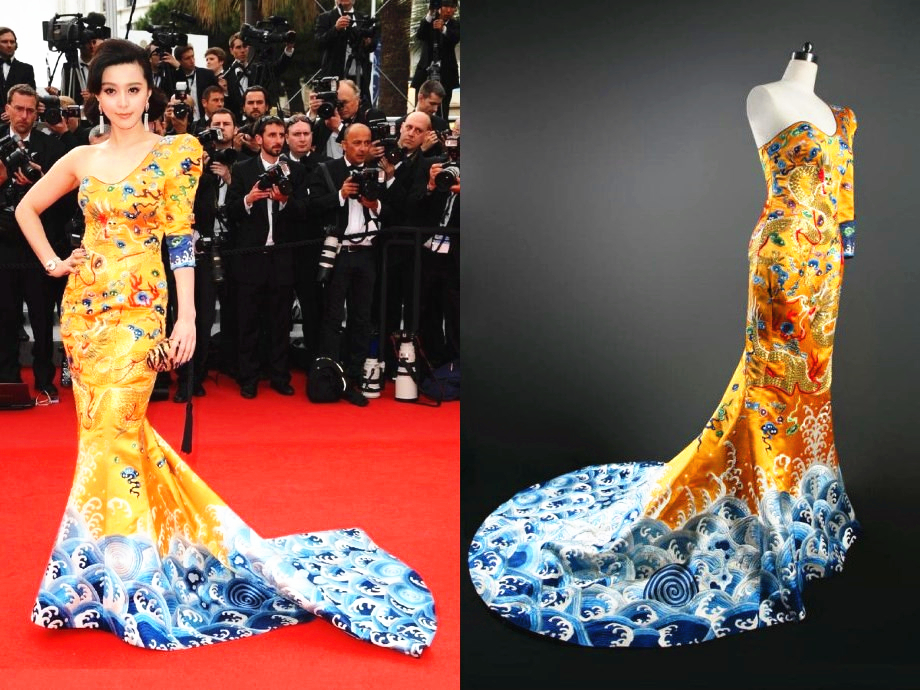Linking aesthetics to cultural creativity

Aesthetic creativity lies at the core of cultural creativity that is the key to industrial transformation. The eye-catching dress worn by popular actress Fan Bingbing at the 2010 Cannes Film Festival is a piece of art that combines a traditional Chinese clothing style and modern elements.
The times call for innovation. Pure theoretical research within one single discipline can no longer serve the increasingly active and rich public aesthetic experience. From April 8 to 9, the high-level academic forum of “aesthetic and cultural creativity” was held at the Southern University of Science and Technology, Shenzhen. Scholars discussed related issues from multiple perspectives.
Creativity
From the aesthetic point of view, creativity forms the aesthetic ideal, reflecting the subconscious pursuit of the creator’s aesthetic ideal, which shows the return of the aesthetic spirit to real life. Peng Xiuyin, a professor from the School of Literature and Journalism at South-Central University for Nationalities, Hubei Province, said creative thinking and design are accompanied by the pursuit of aesthetic ideals.
Jiang Shuzhuo, a professor from the College of Arts at Jinan University, Guangdong Province, said creativity is sometimes an extension of an existing aesthetic image. It is the growth of creativity that can be gained through three channels: inheritance, adoption and mixture. There is no strict boundary between these three methods, and they can be flexibly used based on different conditions. In addition, Jiang links creative growth with leisure aesthetics, arguing that the latter speaks for a relaxed, comfortable state in which creativity growth and its pursuit of aesthetic extension should happen.
Pan Liyong, deputy dean of the Asia-Pacific Leisure Education Research Center at Zhejiang University, said the key to China’s current industrial transformation and the prospects for cultural industries lie in creativity. Although the issue has been widely addressed by the public and academics, in-depth and systematic research, especially interdisciplinary and comprehensive research, are still lacking.
Aesthetic construction
The fundamental value of cultural creativity lies in creating new life experiences to enrich the spiritual lives of people. Gao Xiaokang, a professor from the College of Arts at Nanjing University, said in this sense, the core of cultural creativity is aesthetic creativity. The essence of intangible cultural heritage protection lies in the preservation of dynamic heritage and sustainable development of culture, that is, to protect the spiritual connotation and vitality of cultural traditions. This spiritual connotation represents the collective memory of different cultural groups, the inner needs of imagination and emotional identity, and aesthetic demands in the most basic sense.
Luo Yunyun, a professor of philosophy at Sun Yat-sen University, said that the key to cultural development is integrity, longevity and sustainability. Activating the traditional cultural resources and enhancing the efficiency of cultural and creative industries can help time-honored famous enterprises regain their former glory. This requires attaching importance to cultural and material protection, so that history and culture, and modern culture can complement each other.
Cheng Xiangzhan, a professor of literature from Shandong University, said as an important motivation in cultural development, aesthetic power has a dual nature that is both constructive and destructive. Aesthetics occupies the core position in cultural creativity. Therefore, finding ways to avoid the destructive side of aesthetics has become the first problem facing ecological cultural creativity.
At present, there is a more direct and effective correspondence between daily life and the cognitive form provided by aesthetics. Wang Desheng, dean of the Institute of Aesthetics at Capital Normal University, said that the essence of this relationship lies in how life molds its “perceptibility.” The impact of aesthetics on life turns from being “guiding” to being “interventional.” “Aesthetic intervention” should not be considered as a structure that holds life high up in the air, but a force that could unfold from within life.
Cultural products
Nowadays, there is a need to establish a broad sense of “culture,” that is, a thorough understanding of all the creations and achievements of human civilization in various fields. Xue Fuxing, a professor of philosophy from Nankai University, said this broad “cultural” concept represents the new process in human civilization.
Wang Xuxiao, a professor of philosophy from Renmin University of China, argues that successful cultural products should have the following characteristics: positive ideological connotations; meet market demands and possess sufficient market liquidity; satisfy people’s aesthetic needs at all aspects; the ability to go global; innovative and capable of guiding consumption.

 PRINT
PRINT CLOSE
CLOSE